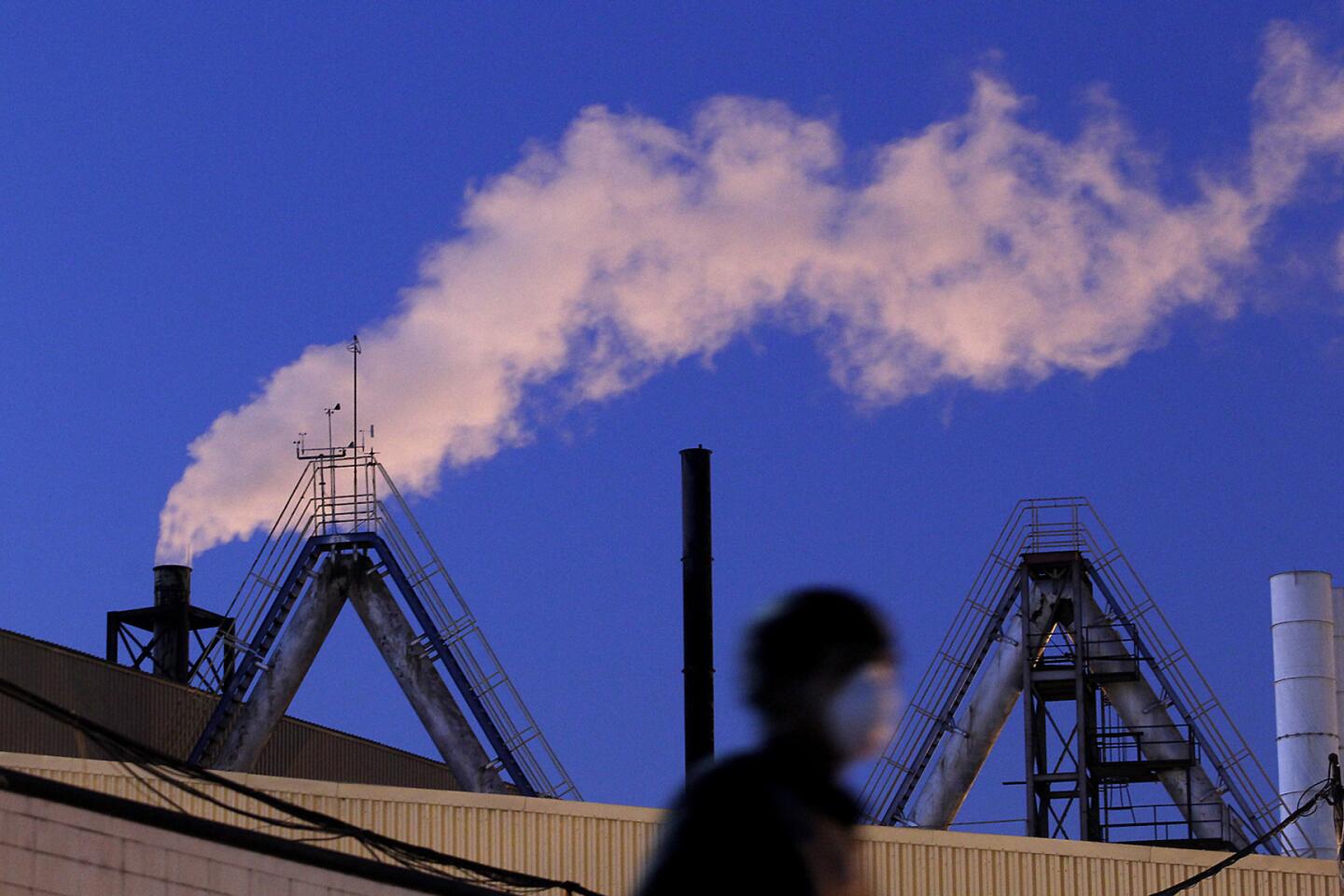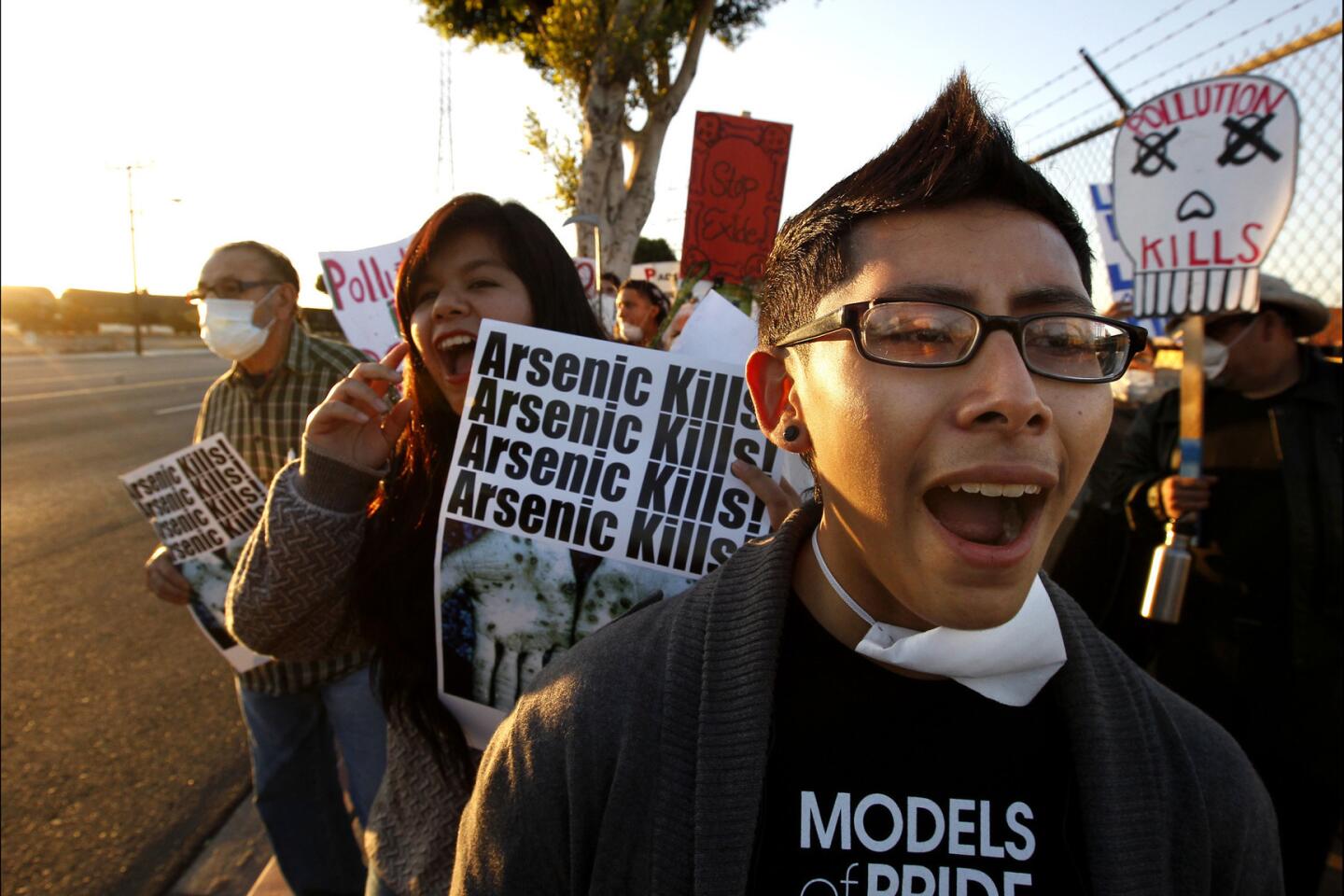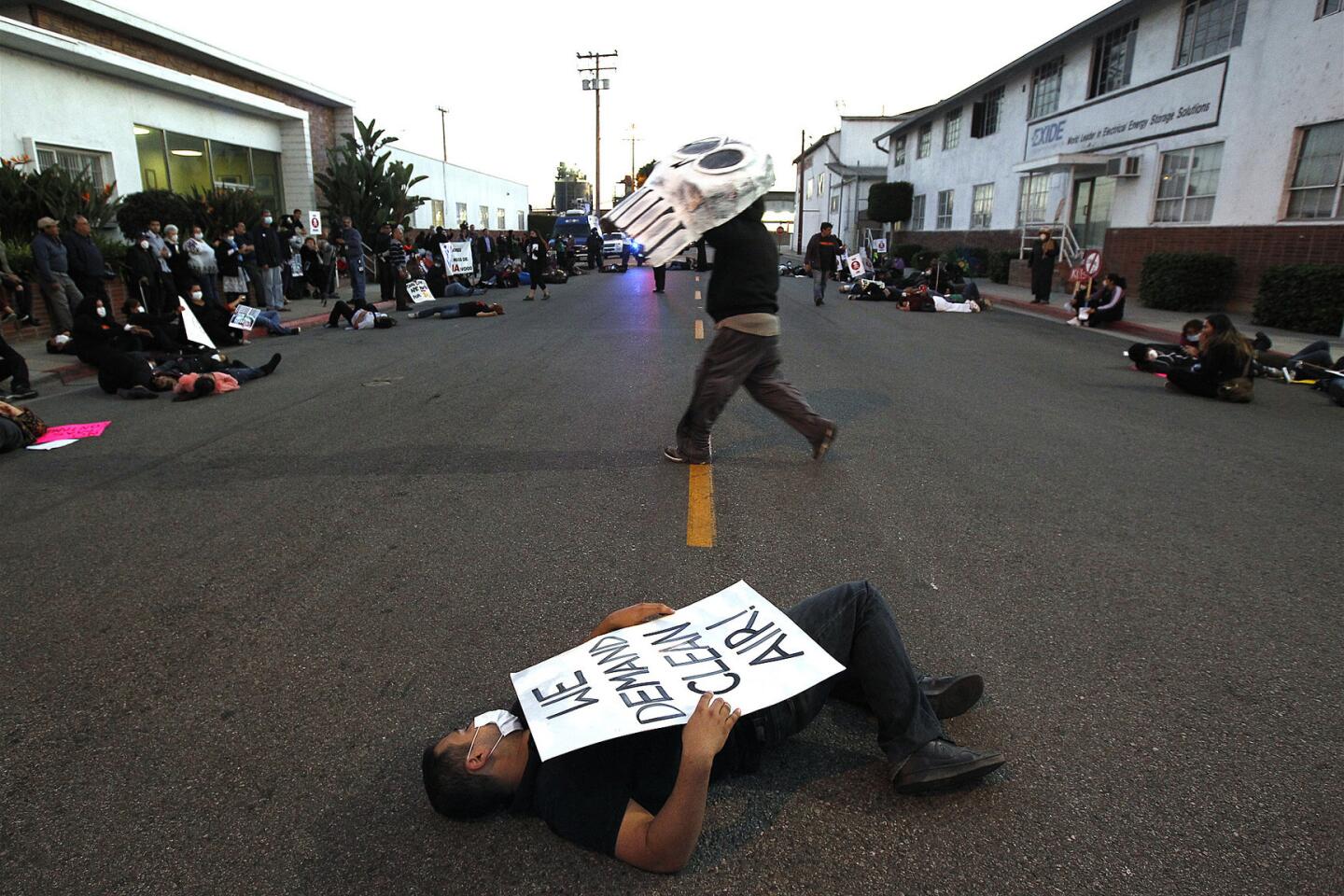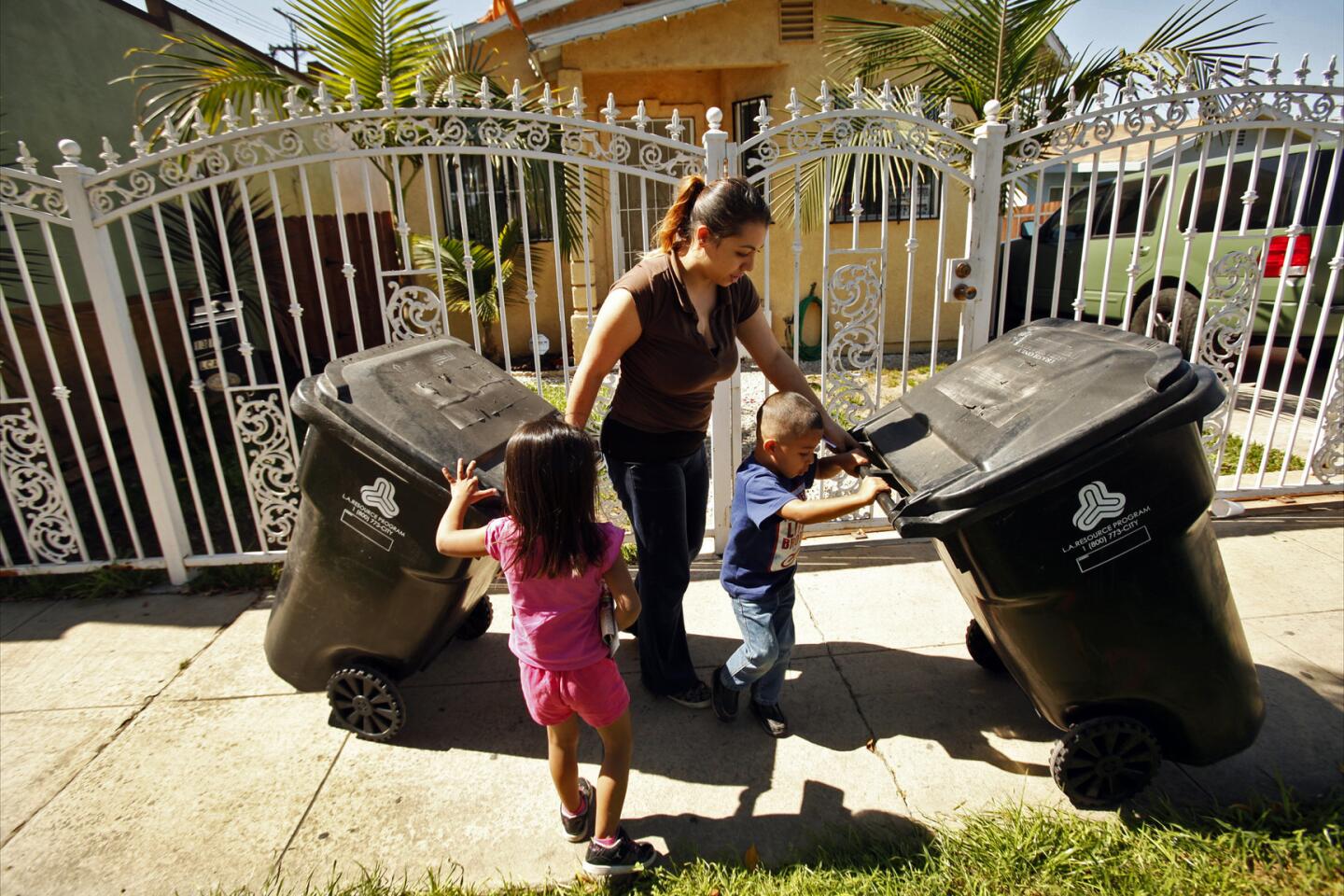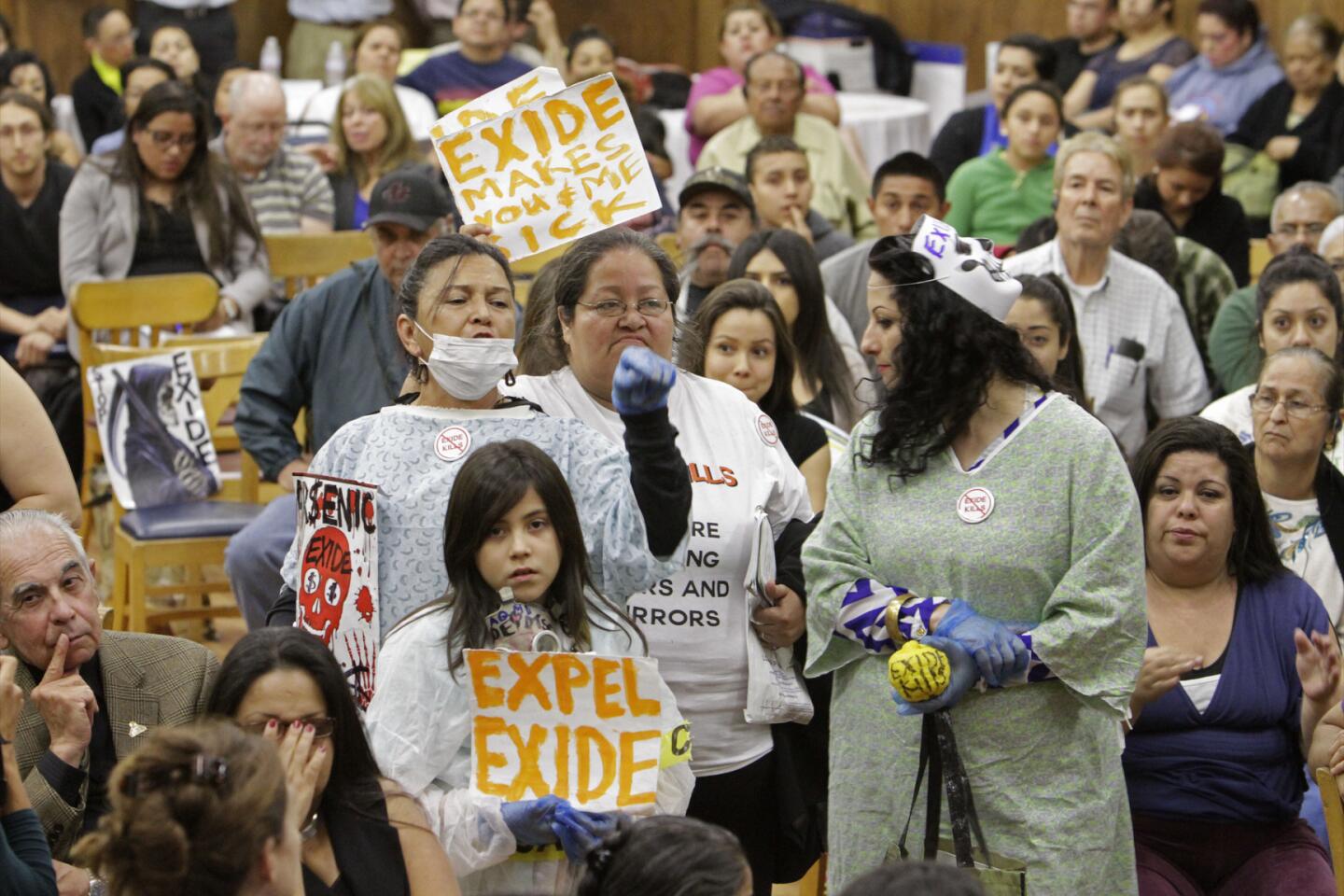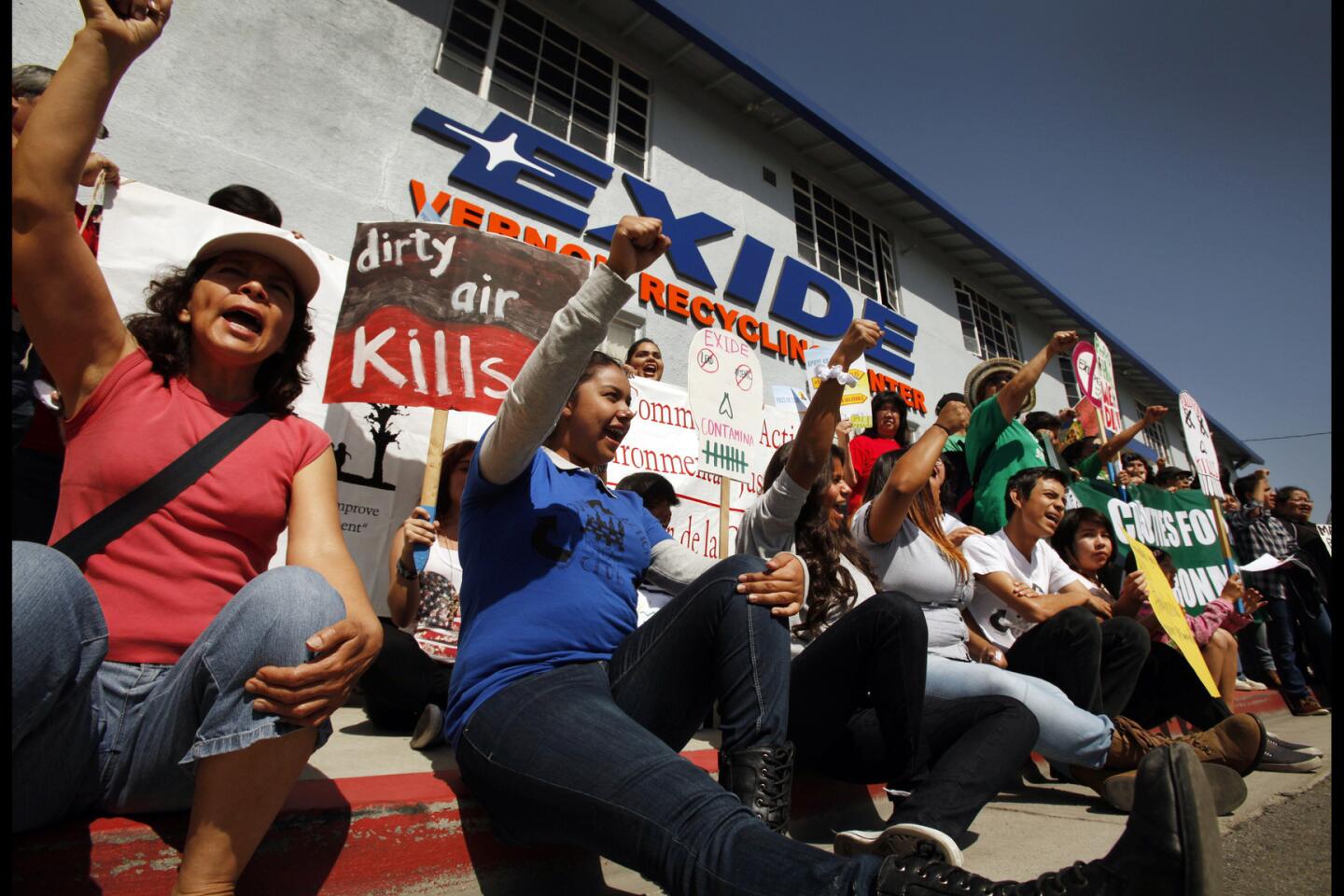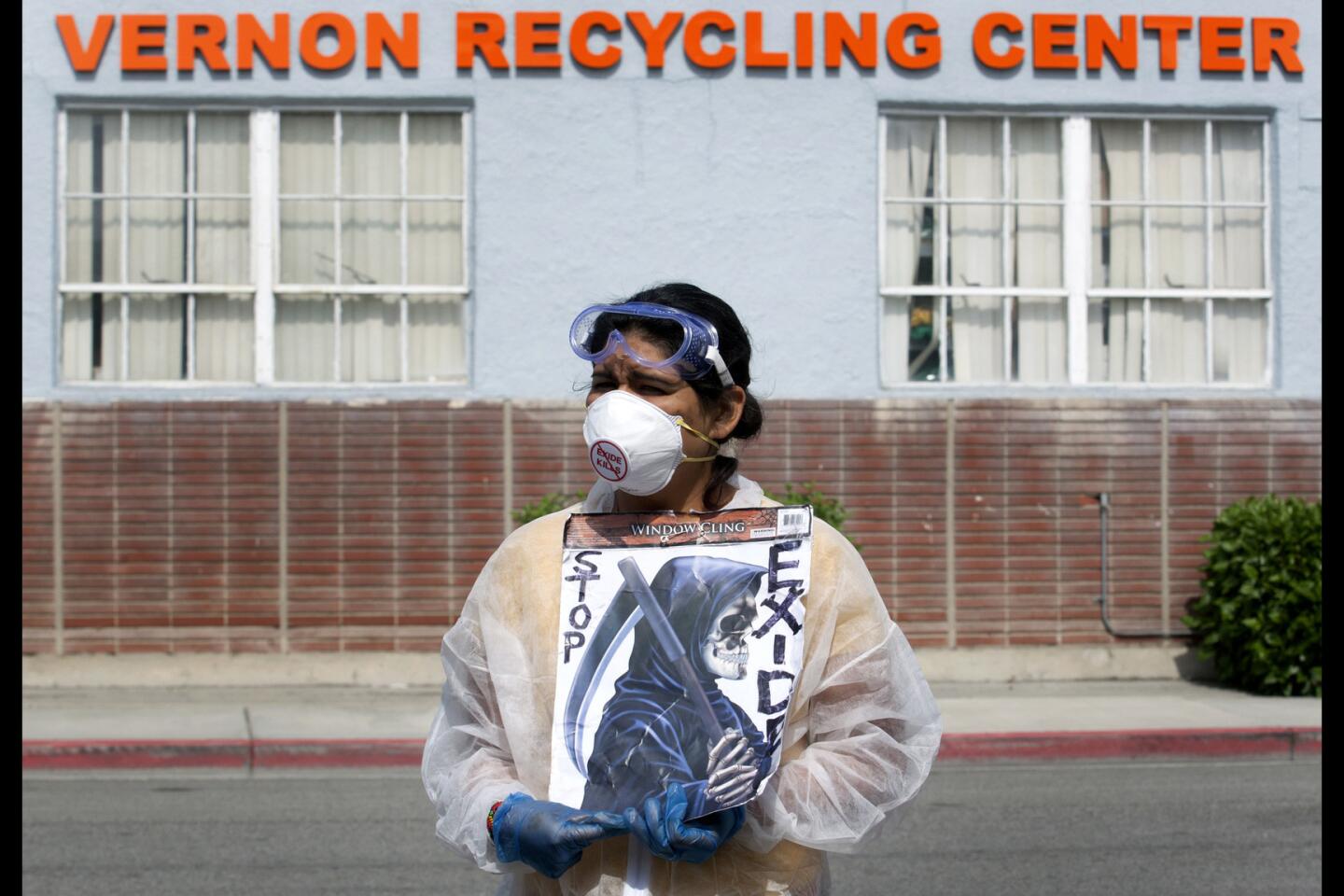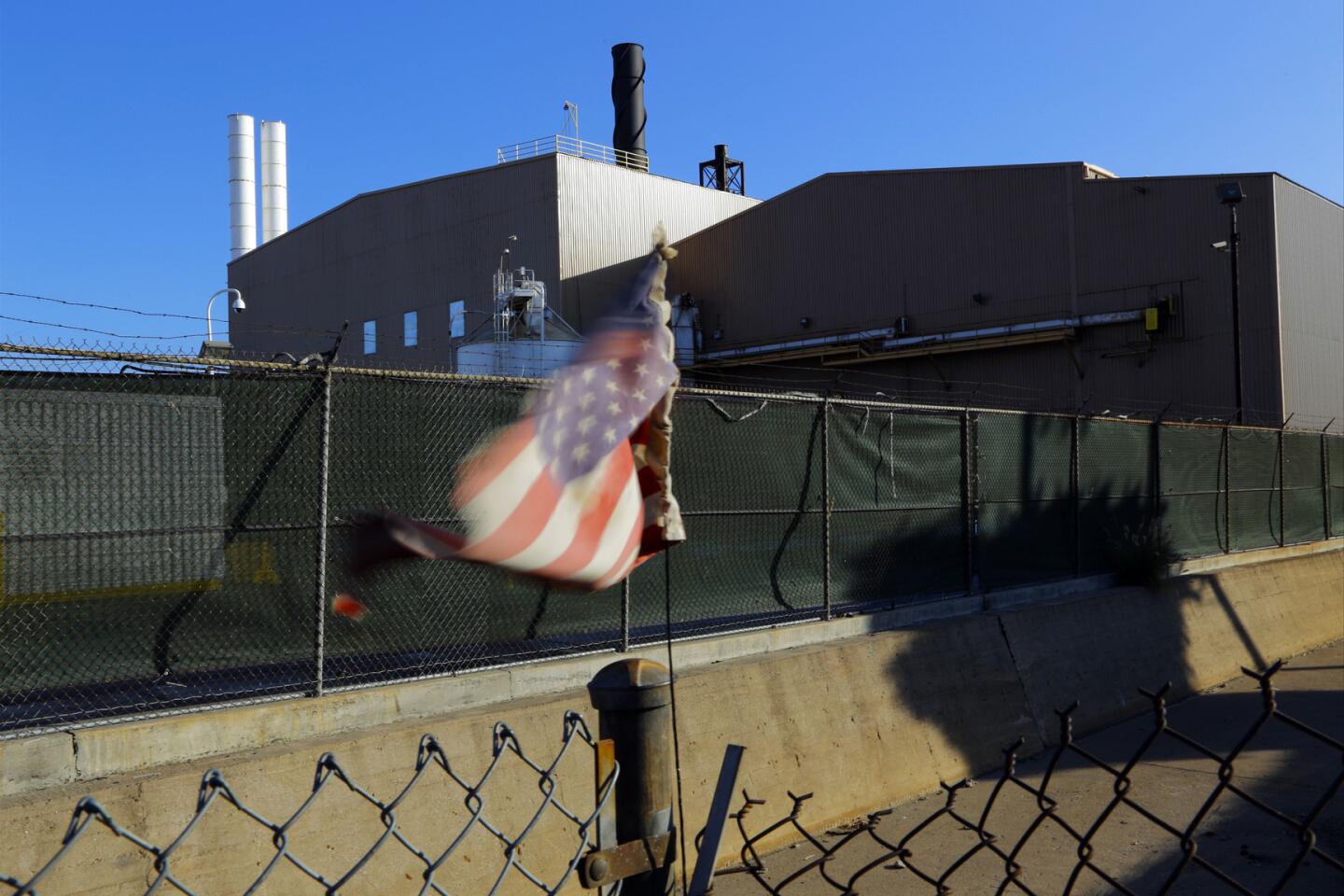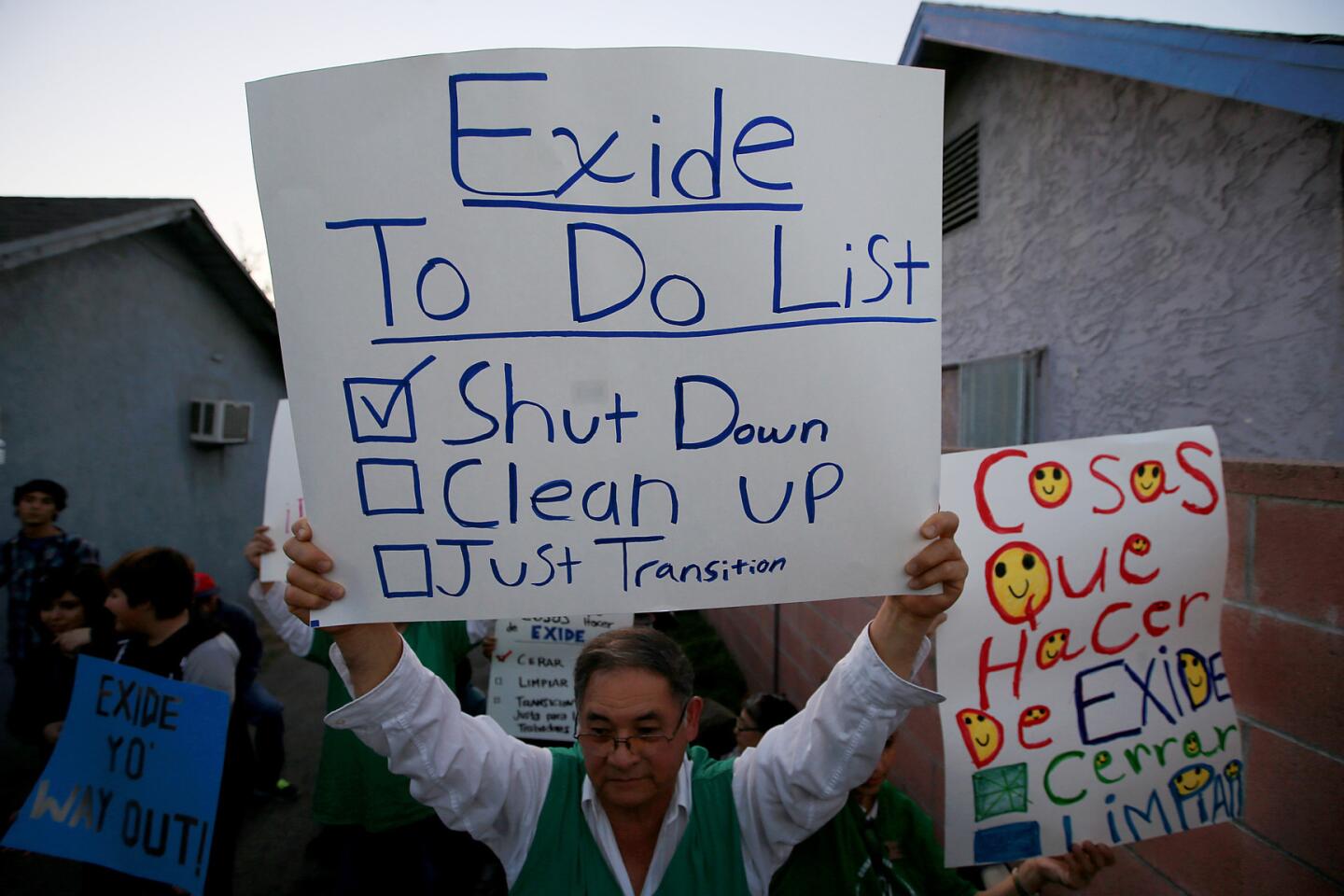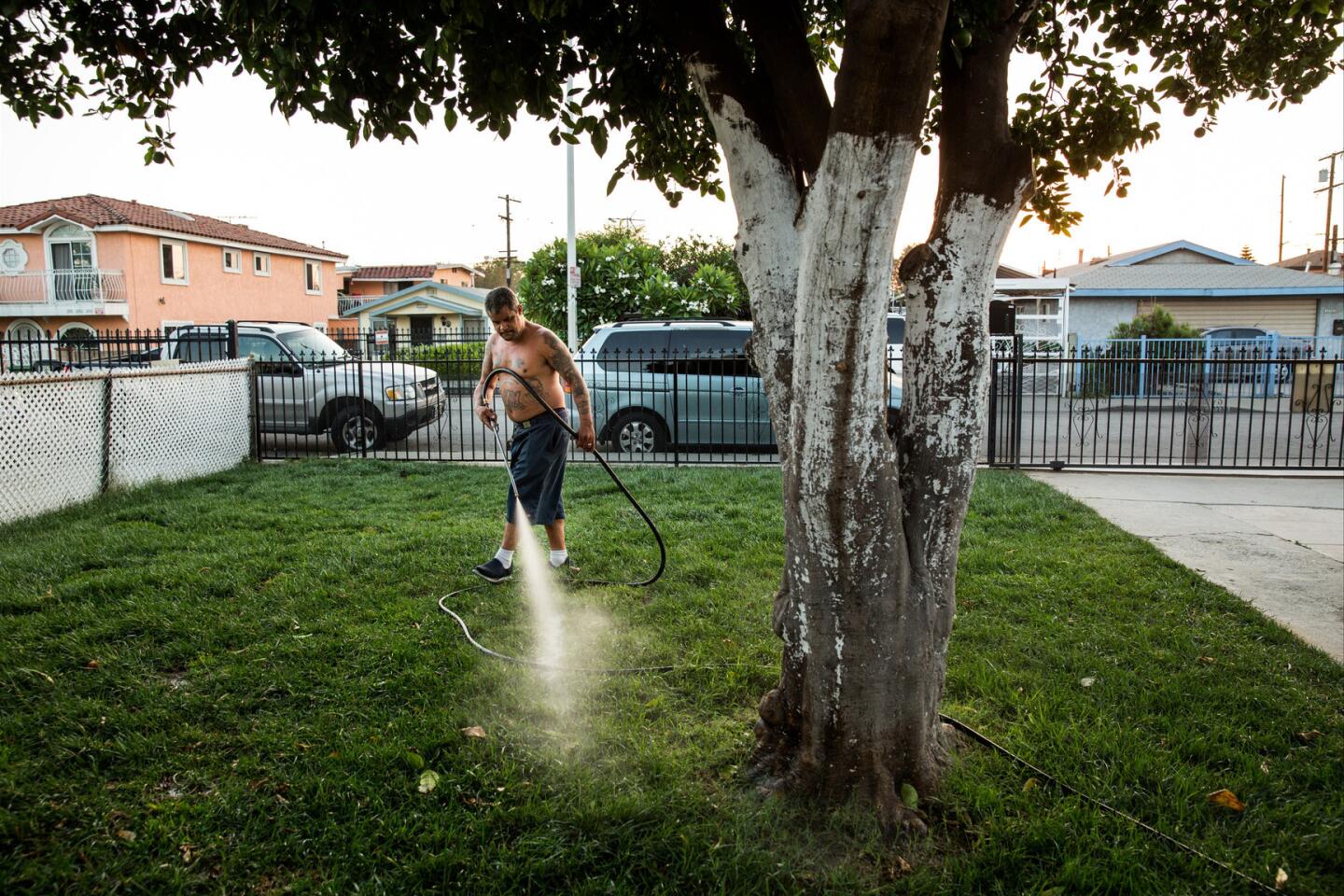Story So Far: How a battery recycler contaminated L.A.-area homes for decades

Unsettled: Exide | Video by Bethany Mollenkof and Spencer Bakalar
Residents of southeast L.A. County rejoiced this year at news that a battery recycling plant that had long emitted lead, arsenic and other dangerous pollutants would be closed.
Just a few months after the announcement by the U.S. attorney’s office, soil testing revealed the mess left behind by decades of pollution from the Exide Technologies plant.
California regulators now believe as many as 10,000 homes across half a dozen communities could be contaminated with poisonous lead. They are ramping up a massive cleanup that could take years and cost hundreds of millions of dollars.
TIMELINE: A history of Exide Technologies>>
The expanded cleanup is the latest in a series of revelations that have stirred outrage in working-class, Latino communities near the plant and raised questions about why state regulators failed to act sooner.
How long was Exide polluting L.A. area neighborhoods?
The plant operated in the industrial city of Vernon since 1922, spewing toxic air pollution over decades. Georgia-based Exide took over in 2000.
The 15-acre facility, known as a lead-acid battery smelter, had been one of only two plants west of the Rocky Mountains that could melt down lead from used car batteries for use in producing new ones. It operated around the clock seven days a week in the industrial city of Vernon, processing about 25,000 batteries a day.
Exide ran afoul of environmental regulations for years. Local, state and federal officials cited the plant over and over for emitting too much cancer-causing arsenic and lead, a potent neurotoxin, and for violating hazardous waste laws.
What was done to address the problems?
Activists in Boyle Heights, Commerce and other communities contended for years that Exide’s operations were illegal and harmful to health. But it wasn’t until 2008, after complaints of ash falling on nearby soil, streets and businesses, that air quality regulators acted to curtail emissions.
The California Department of Toxic Substances Control, had known for years that Exide was violating environmental laws by releasing pollutants into the air, soil and water, but failed to stop it. For 33 years the state allowed the plant to operate without a full permit, even as inspectors documented more than 100 violations, including lead and acid leaks, an overflowing pond of toxic sludge, enormous cracks in the floor and hazardous levels of lead in the soil outside.
In 2013, as indignation over the air pollution raged, the toxics department tried to shut the plant down. The company went to court and got a state closure order overturned.
Strict new air quality regulations forced the plant to go idle in 2014. But the company continued to rack up violations for emitting too much lead. In January 2015, state toxic waste inspectors found additional problems, including holes in the facility’s roof and walls.
What finally shut down the plant?
As demands to close the plant mounted from community groups and elected officials, the company revealed in 2014 it was under federal criminal investigation. The probe of its operations in Vernon was a powerful hammer, threatening the company with charges that could land its executives in jail.
In March 2015, the company signed an agreement with the U.S. attorney’s office to close permanently.
The deal allowed Exide and its employees to avoid prosecution for years of environmental crimes, including illegal storage, disposal and shipment of hazardous waste, while agreeing to pay $50 million to demolish and clean the plant and surrounding communities, including $9 million set aside for removing lead from homes.
Which communities are affected?
State officials believe Exide’s lead emissions contaminated soil in six southeast L.A. County communities: Boyle Heights, East Los Angeles, Commerce, Bell, Huntington Park and Maywood.
When state regulators first ordered Exide to test soil in nearby homes in 2013, they limited it to two small areas of about 200 homes in Boyle Heights and Maywood. After testing farther from the plant, officials revealed in August that the lead contamination extends as far as 1.7 miles from the plant and may have fouled as many as 10,000 homes.
What are the health risks from Exide’s emissions?
While Exide was operating, air quality officials determined its arsenic emissions posed an increased cancer risk to more than 100,000 residents.
Even more concerning was lead, one of the oldest known poisons. The toxic metal, released over many years, can cause learning disabilities, lower IQs and other developmental problems, even at low levels. Children are most at-risk.
Authorities have encouraged people living near the Exide to sign up for free blood tests for lead poisoning. The Exide-funded screening program is administered by the L.A. County health department.
How big is the cleanup?
Removing lead-contaminated soil from thousands of homes would be the most extensive cleanup of its kind in California and among the largest ever conducted in the nation.
Since August 2014, the Department of Toxic Substances Control has removed lead-tainted soil from more than 185 homes. The department has used up most of the $9 million in residential cleanup money Exide placed in a trust fund and is tapping $7 million in state funds to expand testing and cleanup. How long it will take depends on many homes are found to be contaminated and whether officials can find the money to clean them. Each home costs about $40,000 and and a week to complete.
The slow pace of home testing and cleanup has infuriated community groups and local officials, who say a lack of urgency by state regulators forced them to conduct their own soil sampling and door-to-door outreach campaigns.
What else is happening?
L.A. County Supervisor Hilda Solis has urged Gov. Jerry Brown to appoint an independent expert to oversee the cleanup and to establish a commission to investigate what went wrong at Exide and who is responsible. But the idea has not gained traction in Sacramento.
Exide is facing multiple lawsuits over its pollution, including several from families near the plant and one from the region’s air-quality agency. If the company fails to live up to its cleanup obligations at any point in the next 10 years, it could be charged with felonies it admitted to as part of its agreement with the U.S. attorney’s office.
TIMELINE: A history of Exide Technologies>>
FULL COVERAGE: Read more from The Times on Exide>>
For more coverage of Exide, air quality and the environment, follow @tonybarboza
More to Read
Sign up for Essential California
The most important California stories and recommendations in your inbox every morning.
You may occasionally receive promotional content from the Los Angeles Times.
